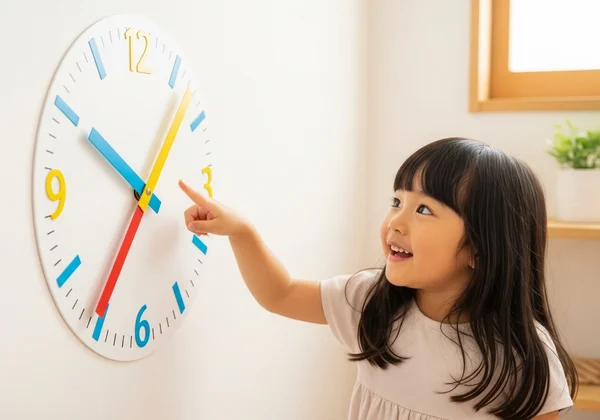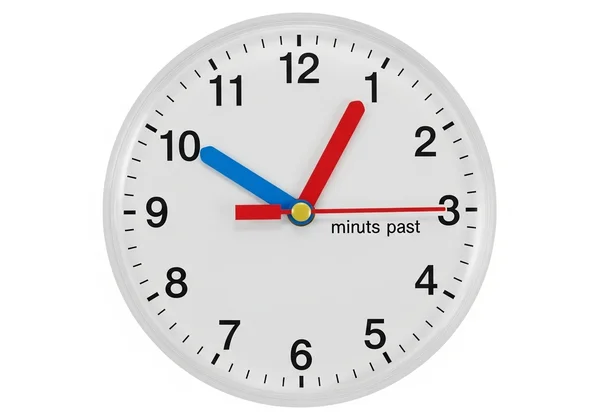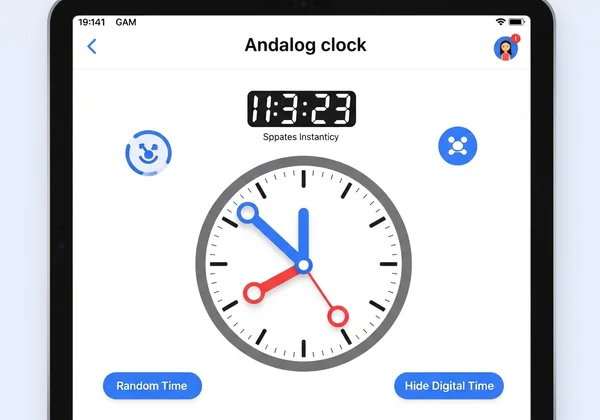Teach Analog Time: A Parent's Guide by Age & Milestones
In our digital world, where screens flash time instantly, many parents might wonder: Is learning analog clock reading still important? Yes, absolutely! Understanding the analog clock is a fundamental skill that helps develop essential thinking skills, from number sense to logical reasoning. But how do you introduce this seemingly complex concept to your child in a way that’s easy and fun? This comprehensive guide will walk you through age-appropriate milestones and effective strategies to help your child confidently master analog time, turning what seems intricate into an engaging learning journey. Get ready to make abstract time concepts concrete when you learn with us.

Understanding Your Child's Time-Telling Milestones
Every child develops at their own pace, but recognizing general time-telling milestones can help you tailor your approach. Knowing what to expect at different ages can make the learning process smoother and more effective, building a strong foundation.
Pre-K & Kindergarten: Building Foundational Time Awareness
At this early stage, the focus isn't on precise time-telling but on developing a foundational time awareness. Children aged 3-5 begin to understand the concept of time through daily routines. They grasp ideas like "morning," "afternoon," and "night," and understand the sequence of events (e.g., "first we play, then we eat"). Introduce them to the clock face itself, pointing out the numbers 1 through 12. Discuss that the clock shows us "when" things happen. This early preschool clock learning is about exposure and curiosity.
Early Elementary (Grades 1-2): Mastering Hour and Minute Hands
As children enter grades 1 and 2 (ages 6-7), they are ready to delve deeper into early elementary time concepts. This is where the real work of mastering the hour and minute hands begins. Start by focusing solely on the blue hour hand, teaching them it points to the hour. Once that’s clear, introduce the red minute hand and explain it tells us the minutes past the hour, and that we often count by fives for the minute marks. Practice telling time to the hour (e.g., "3 o'clock") and half-hour.

Upper Elementary (Grades 3+): Tackling Tricky Time Concepts
By third grade and beyond (ages 8+), children are ready for more advanced concepts, tackling tricky time concepts like quarter past, quarter to, and elapsed time. They should be proficient in telling time to the nearest five minutes and then the nearest minute. This stage involves understanding the relationship between hours and minutes, and how time passes in intervals. Continue to make learning fun, reinforcing their skills with practical applications.
Age-Appropriate Strategies to Teach Analog Clock Reading
Teaching time requires patience and a systematic approach. By breaking it down into manageable steps, you can help your child grasp this essential skill without feeling overwhelmed. Here are some age-appropriate strategies to teach analog clock reading.
Simple Steps for Beginners: Focus on the Hour Hand First
For young learners, simplify the process by starting with the most straightforward concept: the hour. Follow these simple steps for beginners:
- Introduce the Hour Hand: Show your child the shorter, blue hour hand. Explain that it tells us the hour.
- Practice Hours: Ask them to identify what hour the blue hand is pointing to. Start with "o'clock" times, like 1:00 or 5:00.
- Connect to Daily Life: Relate hours to specific events in their day: "When the blue hand is on the 7, it's breakfast time!" This helps them understand the how to read an analog clock step by step process in a tangible way.
Integrating Time into Daily Routines and Play
The best way to solidify time-telling skills is through integrating time into daily routines and play. Make time a natural part of your conversations. Ask: "What time is it for lunch?" or "How many minutes until we go to the park?" Use analog clocks around your home as teaching tools. Turn it into a game by setting a toy clock to a specific time and having them tell you what it is, or vice-versa. This practical application makes learning fun and relevant.

Boosting Learning with Interactive Tools & Games
While hands-on practice with physical clocks is valuable, interactive online tools offer a dynamic, engaging way to learn. They provide immediate feedback and adapt to your child's learning pace, making fun time learning accessible.
How Our Interactive Clock Supports Each Learning Stage
Our free, engaging interactive clock is designed specifically as a teaching clock for children, parents, and educators. Our educational clock is incredibly versatile, supporting every learning stage:
- Interactive Operation: Kids can simply use their mouse or finger to drag the blue hour hand and red minute hand around the clock. As they move, the digital time updates above, providing instant, visual feedback.
- Practice Mode: Click the "Random Time" button to generate a new time for your child to practice reading. This is fantastic for quick quizzes and reinforcing recognition.
- Self-Test: For a real challenge, use the "Hide Digital Time" feature. Your child can read the time on the analog clock, then click "Show Digital Time" to check their answer, fostering independent learning.
- Targeted Training: Use the "Lock" feature to focus on one hand at a time. Lock the hour hand to practice minute hand movements, or vice-versa. This helps with how to tell time more precisely.
Our platform is a vibrant "Fun Clock Playground," making learning feel like a game. It's completely free and accessible on any device, anywhere! Ready to see it in action? Explore our clock now and discover why it’s the best online analog clock for kids.

Fun Activities and Challenges Using Our Interactive Clock
Our online analog clock makes creating fun timetelling games a breeze! Here are a few ideas:
- "What Time Is It?" Race: You set a time on the interactive clock, and your child has to tell you what time it is as quickly as possible. Then switch roles!
- "Random Time" Challenge: Use the "Random Time" button on our interactive clock. See how many random times your child can read correctly in one minute.
- "Time Detective": Give your child a real-world scenario, like "It's 7:00 AM, time for school!" Have them set the clock to that time and then discuss what they typically do at that hour.
- "Lock & Learn": Use the "Lock" feature to practice just minutes or just hours. Say, "Lock the hour hand at 2. Now show me 2:15, 2:30, 2:45." This is great for telling time games.
These simple time games using our interactive clock keep children engaged and reinforce their learning effectively.
Empower Your Child: Confidently Telling Time is Within Reach
Teaching your child to read an analog clock might seem like a daunting task in the age of digital screens, but it's an incredibly rewarding journey. By understanding developmental milestones and using age-appropriate strategies, you can make this learning experience enjoyable and effective. The skills your child gains, from understanding sequencing to basic mathematics, extend far beyond just telling time.
With tools like our free interactive clock, you have a valuable resource readily available. It makes hands-on practice engaging and fun, helping children grasp abstract concepts in a concrete way. Empower your child with confidence and a fundamental life skill. Don't wait – start the fun today and watch your child become a time-telling pro!
Frequently Asked Questions About Teaching Analog Time
Parents often have questions when guiding their children through the nuances of clock reading. Here are some common queries about teaching analog time.
What age should a child be able to read an analog clock?
Most children begin to grasp the concept of reading an analog clock around ages 5-7 (kindergarten to second grade). They usually start by understanding "o'clock" times and then progress to half-hours, quarter-hours, and eventually telling time to the minute. Remember, every child is unique, and progress can vary. The key is consistent, fun practice. Feel free to start today at any age!
How do you explain the hour and minute hand to a child?
A common analogy is to think of the blue hour hand as the "slow, strong arm" that points to the main number (the hour), and the longer, red minute hand as the "fast, little arm" that sweeps around the clock counting the minutes. You can also imagine the minute hand taking tiny steps (one step for each minute mark) or bigger jumps (five steps for each number). For hands-on practice to practice reading how they move together, visit our site.
Are analog clocks better for learning than digital?
Yes, for conceptual understanding, analog clocks are better for learning than digital ones. Analog clocks provide a visual representation of time passing, showing the relationship between hours and minutes in a circular, continuous motion. This helps children develop a stronger understanding of duration and time intervals, which is harder to visualize with just numbers on a digital display.
Why are analog clocks still taught in school today?
Analog clocks are still taught in school today for several important reasons. Beyond being a practical skill (many public clocks are still analog), learning to read them strengthens a child's number sense, understanding of fractions (quarter past, half past), and spatial reasoning. It encourages critical thinking and problem-solving, foundational skills that digital displays don't inherently foster.